#multituberculate
Text
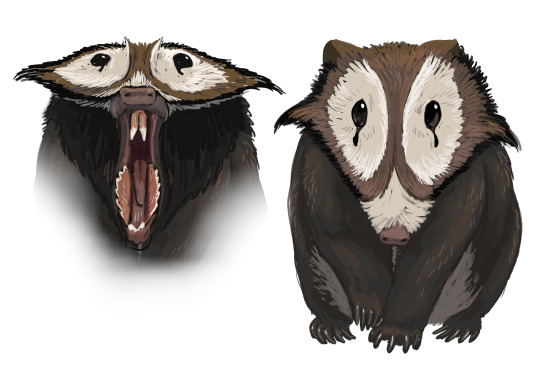
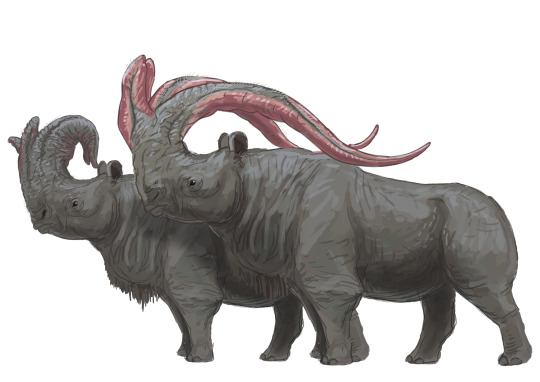

More results from the Fantasy #paleostream!
Our first land predator is an incredible cute little multituberculate mammal, at least it remains cute until it opens it's mouth to reveal the saw like premolars.
After that a large herbivore. This rhino/bronthother mix has inflatable display organs that can reach over half it's body length.
Another herbivore is the table reef crab that lives in shallow lagoons and has little reefs growing on it's back.
546 notes
·
View notes
Text
It Came From The Wastebasket #16: Catopsalis Catastrophe
The rodent-like multituberculates were a major lineage of mammals that were only distantly related to modern marsupials and placentals. They originated around the time of the mid-Jurassic (~168 million years ago), survived through the end-Cretaceous mass extinction, and went on to become one of the most diverse and successful types of mammal in the Paleocene. After that point they began to decline, and after anw over-130-million-year-long run they went extinct* in the early Oligocene (~33 million years ago).
(* Except, possibly, in South America, where an enigmatic fossil known as Patagonia peregrina may represent a multi surviving as recently as about 18 million years ago in the early Miocene.)
First discovered in North America in the 1880s, Catopsalis foliatus was part of a group of multituberculates called taeniolabidoids. These multis got significantly larger than the rest of their kind – averaging beaver-sized but with some species getting up to at least capybara-sized – and were some of the first mammals to evolve into relatively big herbivores after the extinction of the non-avian dinosaurs.

Catopsalis foliatus
Catopsalis was named based on a partial jawbone and a few teeth, and over the next century or so various other similar-looking fossils from both North America and Asia were added into the genus as additional species. Eventually Catopsalis contained eight different species, ranging over about 10 million years from the late Cretaceous to the early Eocene – not especially big compared to some other wastebaskets we've looked at this month, but it was still a problem, muddying up attempts to understand the actual evolutionary relationships and biogeography of the taeniolabidoids.
Cladistic studies in the 1980s showed that Catopsalis was paraphyletic, made up of at least five separate lineages, and a few of them were subsequently renamed and reclassified. The Cretaceous Asian forms became Djadochtatherium and Catopsbaatar, and are now considered to be part of a different lineage of multis known as djadochtatherioids, while one of the remaining North American species then became Valenopsalis.
…But a couple of other new Catopsalis species have also been named in the meantime (one as recently as 2018), so there are still seven different species that need sorting out in this particular wastebasket.
———
Nix Illustration | Tumblr | Twitter | Patreon
#it came from the wastebasket#wastebasket taxon#taxonomy#catopsalis#taeniolabidoidea#cimolodonta#multituberculate#mammal#paleontology#art#science illustration#paleoart#palaeoblr
141 notes
·
View notes
Text

Meniscoessus is a multituberculate mammal about the size of a groundhog from late cretaceous north america. It most likely fed on plant matter, and was probably rather cute.
9 notes
·
View notes
Text
Multituberculate Earth: Djadochtatheroidea: The Children of the Desert

Djadochtatherioidea (also spelled Djadochtatheroidea or Djadochatheroida in publications because an already complicated name needs a more labyrinthine approach obviously) is probably the second best understood multituberculate clade due to the amount of complete skeletons. These animals evolved in the Cretaceous of Asia and were in fact the dominant multituberculates in the continent, to the point the only unambiguous non-djadochtatheroidean allothere from the Late Cretaceous of Asia are the taeniolabidoids Erythrobaatar and Yubaatar. They occupied a myriad of ecological niches from the predatory Kryptobaatar to the herbivorous Catopsbaatar, though they all seem to share adaptations for jerboa-like hopping and digging.
Traditionally, it is thought that djadochtatheroideans met their end in the KT event, since they are conspicuously absent from the Asian Paleocene. However, recently two Paleocene groups, Eucosmodontidae and Boffiidae, have been recovered as nested within this group; similarities have been noted between at least the former and classical Asian taxa for years now so it doesn’t come out of nowhere and I’m inclined to believe it. Both groups are still conspicuously absent from Asia, where lambdopsalid taeniolabidoids dominate, so either the Asian species became extinct in the KT event or were quickly displaced by the lambdopsalids. Considering these animals evolved in desert environments, its clear that the wetter forest world of the Paleocene didn’t do them many wonders.
Both eucosmodontids and boffiids continue the trend of djadochateroidean diversity, the former tending towards carnivory with seed side dishes and the latter being a large herbivore, one of the largest mammals of the Belgian Paleocene. In our timeline they actually endured for quite a bit until the PETM, and in this one this is no different at all, the main difference being that they survived this event, having a higher diversity as placentals declined.
Eucosmodontidae
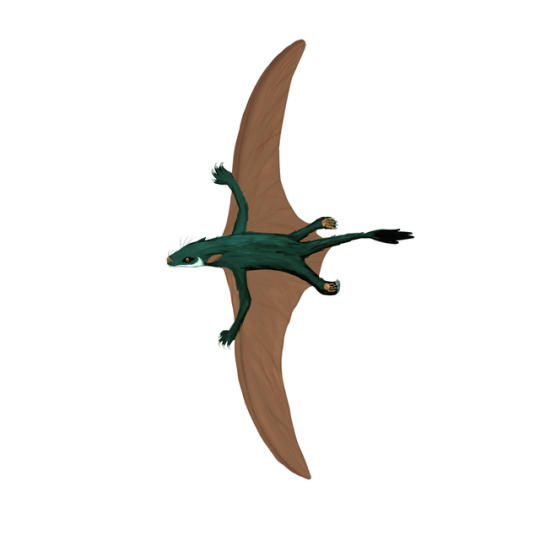
Khusuurbaatarelegans by Dave García.One of various flying euscosmodontid lineages, this one lasted across the Eocene, with fossils found in Asia, Europe, North America, Australia and Antarctica. It was a genus of fast aerial insectivores, this species being the largest known with a wingspan of 60 centimeters.
Relatively basal members of Djadochtatheroidea, eucosmodontids possess large plagiaulacoids, apt for their primarily carnivorous diets with occasional granivory and frugivory. Across the Paleocene and Eocene they mostly diversified as small sized carnivores and omnivores, occupying niches similar to those of muroid rodents, tarsiers and cats, with some otter and desman-like swimmers. Like their Cretaceous relatives they are well adapted to hopping, and larger species resemble carnivorous kangaroos that act like dogs, hopping after prey for long distances. Also like their Cretaceous ancestors (and most multituberculates for that matter) they possess tarsal spurs, though they are rarely venomous as they use that energy and resources for hopping.

Myypbaatar eocursor, a civet or cat like eucosmodontid from the Eocene of Mongolia. Like many of its peers it was a predator, but also an opportunist fruit and seed-eater. By Dave Garcia.
In terms of predatory niches, eucosmodontids carefully remained in the background as other clades like ptilodontoideans and microcosmodontids duked it out. This lasted until the Miocene, when a combination of expanding grasslands and the decline of other multituberculate predators allowed them to sky rocket both as mouse analogues and as carnivoran analogues, mimicking the ecological radiation of those clades in our timeline.
And they were quick to turn to another ecological goldmine: the skies. And in this a group of mostly unassuming hoppers produced some of the most spectacular mammals of this timeline.
Hopping animals, eucosmodontids were prime material for developing powered flight. Most species were only semi arboreal, but in the rainforest world of the Eocene it paid off to be able to use both resources on the trees and the ground. Hopping offered the begins of a flight stroke in the extension of the forelimbs before landing, and as the animals developed various airfoils different wing types evolved. Some like Plummobaatar developed “feathered” wings similar to those of pteroectypodids, while others like Khusuurbaatar developed flying squirrel-like styliform bones on the wrist, that quickly elongated to form a pterosaur-like wing. Others still just developed bat-like wings.

This innovation proved quite useful. Like all flying mammals and pterosaurs, acamapichtliids launch quadrupedally, vaulting using the forelimbs. The backwards-pressing styliform bone adds more power, acting like a spring; likely an ossification of the triceps tendon, it is pulled backwards by the humerus muscles, and against the ulna by wrist tendons. As such it is suffused by tendons inside and out, extending or flexing the bone, preventing it from breaking by distributing pressure and adding additional energy as they move. Combined with the respiratory benefits of the epipubic bones (to which are attached muscle systems responsible for lung ventilation), this allowed acamapichtliid flight to be energy efficient, and they quickly attained massive sizes.
Already by the Rupelian/Chattian boundary these animals attained wingspans of 7 meters, comparable to those of the largest flying birds and contemporary insulonycteriids and surpassed only by the long gone azhdachid pterosaurs; this might represent the current size limit as the wing length is limited due to the styliform folding against the lower arm when in disuse, though derived species are getting around this problem by developing bent wing tips, digitigrade forelimbs and a more flexible yet strong styliform with various ossified tissue and tendon arrangements, all allowing for a potentially longer wing with top-tier folding.
Still, the low aspect ratios are mostly favoured by inland soarers, which is exactly what these animals specialised as. Occupying a niche similar to those of azhdarchid pterosaurs, they stalk their prey in the ground, though their tends to be proportionally larger since all terrestrial mammalian carnivores above 30 kg need to subsist on prey about the same size or larger. This is mostly not a problem the smaller members of this group with wingspans from 2-4 meters, which tend to be under 30 kg, but for the titans they are the first great raptorial flyers, competing both with birds of prey and insulonycteriids as well as terrestrial carnivores like microcosmodontids, ptilodontoideans and flightless eucosmodontids. On island ecosystems acamapichtliids can very well be the apex predators, though even here they retain the ability to fly.
Besides the styliform, acamapichtliids have collagen membranes fibers to keep their wings from fluttering, similar to pterosaur aktinofibrils; these fibers also further help disperse stress and strengthen the styliform when launching. Their uropatagium is supported by a modified calcar-like tarsal spur but it is otherwise small, the long tail being free from it. It is instead used as a display device, for these animals are rather social, gathering in massive flocks when not hunting.
Unlike most djadochtatheroideans, which have fast breeding cycles, acamapichtliids are K strategists. At birth the young can already walk and run, but like all flying mammals they can only take to their air when they’re close to adult size and the young are rather small in proportion to the mother in order to save weight (i.e. a species with a seven meter wingspan produces a pup the size of a domestic cat). This leaves them at least one year on the ground, so to lessen vulnerability most species form creches like those of flamingos, even located in less hospitable environments like salt flats to deter predators. Both parents take care of the young, males capable of producing milk much like in some bats. Even after growing large enough to fly the young may stay in the vicinity of the family group, with males being the most likely to leave.
Flightless eucosmodontids are mostly retricted to the northern continents, but both acamapichtliids and some Eocene flyers have managed to reach as far south as Antartica. In the southern continents they frequently meet their distant relatives, the boffiids.

Tauutus peon, a derived bipedal boffiid from the Late Oligocene of Africa. These animals tended towards fast running herbivorous niches, and eventually graduated from kangaroo-like hopping to theropod-like running. By Dave García.
More derived and related to forms like Catopsbaatar, boffiids debuted as the large herbivore Boffius splendidus and indeed most members of this group are herbivorous, even losing the plagiaulacoid. They seem to have been displaced from Asia by lambdopsalids in both timelines, and in this one they kept diversifying in Europe’s Eocene, where they produced a myriad of hopping herbivores, some as large as a red kangaroo.

Messelboffius atraxa, a red-kangaroo sized hopper from the Eocene of Europe. By Dr Spooky.
The Grand Coupure led to the end of these forest-dwelling hoppers in Europe, but a lineage managed to raft its way to Afro-Arabia during the mid-Eocene. Here they diversified, there being not only no other djadochtatheroideans besides them but also no other fast-running small herbivores and omnivores, galulatheriids being specialised herbivores, kogaionids hypercarnivorous and afroptilodontoideans stuck in the trees (barring some terrestrial seed eaters). As such, they underwent a massive adaptative radiation, giving rise to a variety of kangaroo and springhare-like hoppers, anomalure-like tree climbers and even tree-kangaroo-like folivores as leaves were too icky for afroptilodontoideans. Most notably, one lineage became bipedal runners, likely evolving in a similar manner as our timeline’s sthenurine kangaroos by being forced to walk bipedally while browsing, though unlike them they were truly agile animals like small dinosaurs. A number of species also appear to have been in an intermediary state, between bipedal runners and hoppers; in general, hoppers preffered open environments and were grazers while runners were forest animals and browsers, with both groups having mixed feeders.
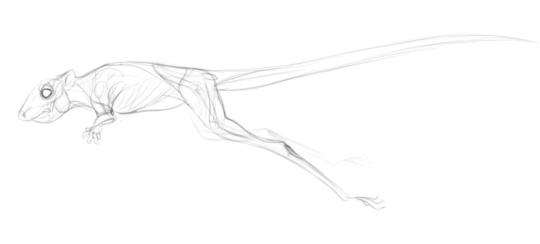
Diagram of Messelboffius atraxa, showcasing its musculature. By Dr. Spooky
Two lineages rafted forth from Africa in the Eocene/Oligocene boundary: one to Madagascar and one to South America. The former diversified in a way similar as they did in Africa, but the latter were met with an essentially overcrowded continent with all manner of mammal lineages. For now, they simply occupy small hopping herbivore niches similar to that of our timeline’s Argyrolagus, but the decline of local omnivores and carnivores by the late Miocene might imply an expansion, particular as eucosmodontids haven’t reached South America yet…
#multituberculate earth#multituberculate#multituberculata#spec evo#speculative zoology#speculative biology
12 notes
·
View notes
Text

Multituberculates!
2 notes
·
View notes
Text
Defunctland style humorous video essays over the rises and falls of extremely niche, extinct groups of animals that no one has heard about before
#'and that was not all for the multituberculates. they would now face their greastest enemy of all time:' *shillouette of a rat*#'song birds.' *picture changes to a sparrow and music swells dramatically*
3 notes
·
View notes
Text
Anal didlo
Camilinha novinha rebolando gostoso na rola
zorrita de Cartago Costa Rica
Amateur Pinay Stepmom and stepSon - Pangangabayo ni Tita / Cowgirl Pinay (pt.5)
Goddess MILF Lisa Ann destroyed before interracial facial
Gay teens kissing porn first time The bombshell is munching and deep
Sexy Big Tits MILF Ariella Ferrera Lets Jobless Stepson Fuck Her To Relieve Stress POV
Had to double back on my girl step sister ass to fuckin FAT
Sexy teens get cop dick in the pussy in threesome sex
Cachando a Nelly de perrito/ Fucking Nelly doggy style
#pot-house#Exchequer#dentinocemental#nonemigrant#Tantrism#gitim#Lull#noninstitutional#withwind#echidnas#multituberculism#calcinize#exophasic#superrefine#grandnephews#exing#baronnes#listener-in#large-drawn#Benghazi
0 notes
Text
344 notes
·
View notes
Text
Wikipedia links in lieu of propaganda.
Cabonnicthys, a devonian lobe-finned fish
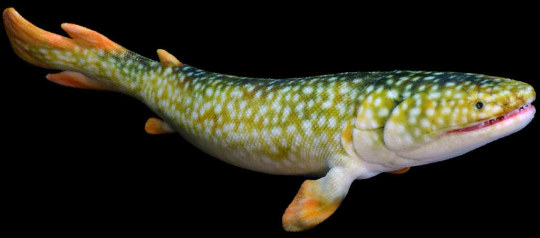
Canowindra, a lobe-finned fish

Charniodiscus, an ediacaran that's almost certainly an animal right

Ciconia louisebolesae, a miocene species of stork

Congruus, a pleistocene kangaroo with lil horn nubbins
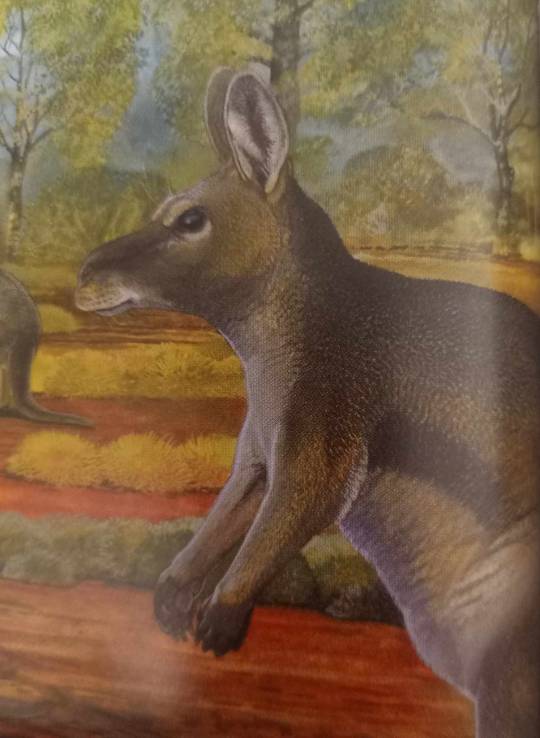
Corriebaatar, a mesozoic multituberculate mammal

Cooyoo, a mesozoic ichthyodectid fish

Cratochelone, a cretaceous protostegid turtle

#please reblog#feel free to advocate for your favourite#palaeoblr#australian fossil alphabet thing#dinosaur#megafauna#cabonnicthys#canowindra#charniodiscus#congruus#corriebaatar#cooyoo#cratochelone
63 notes
·
View notes
Text
Iberica hahni

Iberica was a genus of multituberculate mammal from the Early Cretaceous Period. Its type and only species is I. hahni. Known specimens were found in the El Castellar Formation in Galve, Spain. While the fossils assigned to Iberica have been known since the 1960s, they were not officially named until 2011.
The name Iberica comes from the fossil's location on the Iberian Peninsula. The specific name hahni was named in honor of Gerhard and Renate Hahn for their research on Iberian Peninsula multituberculates.
Known fossils of I. hahni include seven P1/3s (premolars), which are the type specimen, as well as the referred material of a P4 fragment (premolar) and two M2s (molars). Its autapomorphies include the four cusps on its premolars, as compared to three cusps from related genera, as well as cuspules on the mesial and distal margins.
The material assigned to I. hahni, especially the referred P4 and M2s, cannot be certainly assigned to either Eobaataridae or Plagiaulacidae. The type premolars are similar to that of Parabolodon elongatus and Eobaatar? pajaronensis. The P4 fragment is also very similar to that of Cheruscodon balvensis. The tentative assignment to Eobaataridae seems somewhat unlikely.
References: Original description by Ainara Badiola, José Ignacio Canudo, and Gloria Cuenca-Bescós; cladistic assessment by Thomas Martin et al.
Wikipedia article: Iberica hahni
#mammal#mammalia#paleoart#paleontology#artwork#original art#human artist#iberica#eobaataridae#plagiaulacidae#plagiaulacida#multituberculata#obscure fossil animals#obscure fossil mammals
15 notes
·
View notes
Text
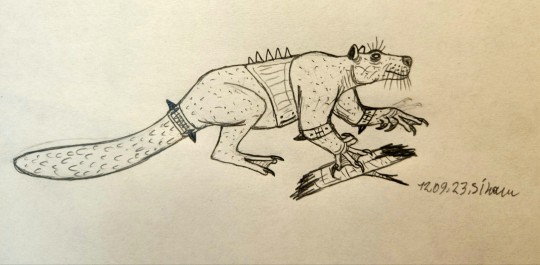
Day 13: Prehistoric sophont
Semi-aquatic multituberculates which were found on roa 27-32 mya.
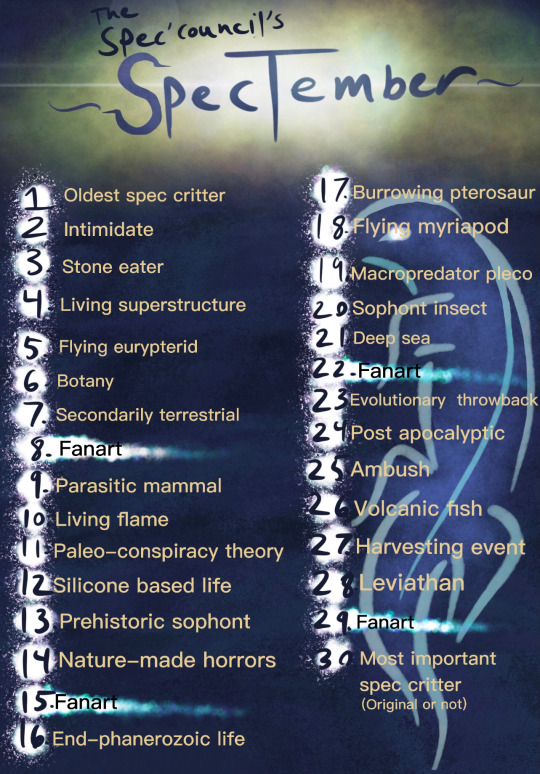
26 notes
·
View notes
Text

Hey guys, how ‘bout a fun fact science corner? I’m wanting to talk about Kimbetopsalis Simmonsae. I know it’s a big word, sadly we don’t have common names for most extinct animals so any creature that hasn’t existed within the last 1000 years is gonna be a mouthful.
Now what does Kimbetopsalis have to do with Cro-Marmot and Dumuzi? This is where science and my headcanons merge.
So Let’s talk Dino-Sore days.
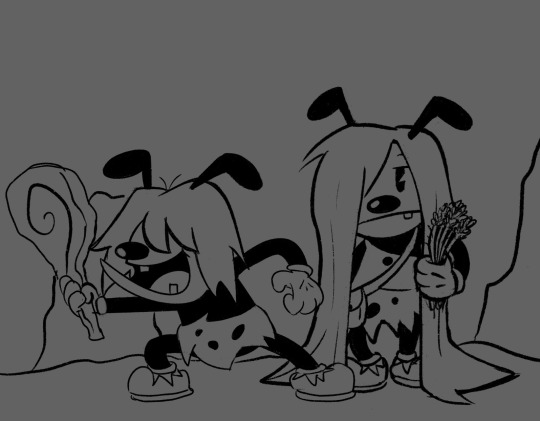
If Cro was around during the age of the Dinosaurs, that dates him all the way back to the Mesozoic era. So let’s throw him at the tail end of the Cretaceous period, when the most popular of the giant reptiles reigned, tyrannosaurus, the titanosaurs, pteranodon, ect.
Marmots did not exist at any time during the entirety of the Mesozoic. In fact, though many of the mammals that lived during that time were very rodent like, true rodents did not even appear for another 10 million years after dinosaurs were wiped off the face of the planet. And marmots did not evolve for at LEAST another 48 million years after THAT.
So Cro and his sister Dumuzi could not have been marmots. So then what were they?
Time to put on my paleonerd hat.
Meet Kimbetopsalis Simmonsae


To the left we have paleoart of what we believe Kimbetopsalis to have looked like, and to the right we have a modern day marmot. Not too drastically different, eh?
Now here’s what’s really cool about Kimbetopsalis. We have fossil evidence that tells us that they are one of the few survivors of the K/PG mass extinction. That’s right, these are one of the legendary mammals that survived the famous asteroid impact that wiped out all the non-avian dinosaurs and played a role in bringing forth the Age of Mammals. If it weren’t for little survivors like them, we wouldn’t be here!
Kimbetopsalis is part of a group of mammals that no longer exists, the multituberculates. These group of animals survived for 130 million years, dying out and disappearing from the fossil record forever in the late Eocene. But don’t be too sad! Multituberculates existed for longer than ANY other group of mammaliforms, including the one that you, I, and every canon character of htf belongs to. The placentals. Today there are only three living groups of crown mammals (aka true mammals): the monotremes (such as the platypus and echidnas), the marsupials (such as kangaroos and opossums), and the placentals.
Now I could go on forever about taxonomies but trust me we’d be here forever. Especially since we are still learning what we can to fully understand mammal evolution. You see, the fossil record for Mesozoic mammals is scarce. Mammals did not get much larger than a badger throughout all the Mesozoic so they did not fossilize easily. Most of what we know about them from that time is from small fragmentary remains, mainly teeth. But despite very few full fossils having been found, we are learning and discovering something new about our ancient mammalian ancestors every day. What we know is constantly changing, but that is the nature of paleontology.

Like I said. We’d be here all day. So let’s move on.
As far as mammals go, Multituberculates like Kimbetopsalis were very common during the Mesozoic. They are easily identifiable by, you guessed it, their teeth.
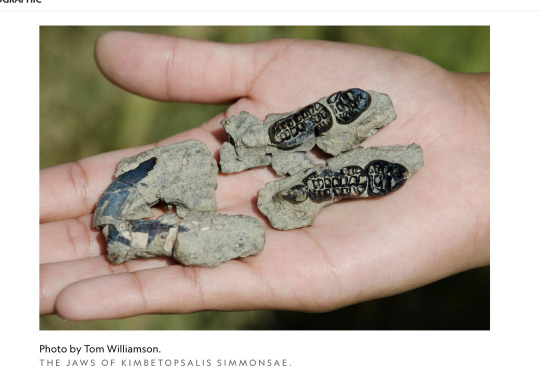
As you can see, the molars have some crazy cusps on them, also known as “tubercles” hence the name. Their teeth are designed for chomping and crunching all kinds of vegetation. These teeth are very unique among mammals and probably helped them to have a generalist diet which would have aided them greatly in surviving the aftermath of the Chicxulub asteroid impact.
Anyways, Kimbetopsalis is a survivor and a cool little critter, much like Cro is. They lived among the largest land animals to ever walk the earth. They survived the horrifying event that saw an end to the Age of the Reptiles.
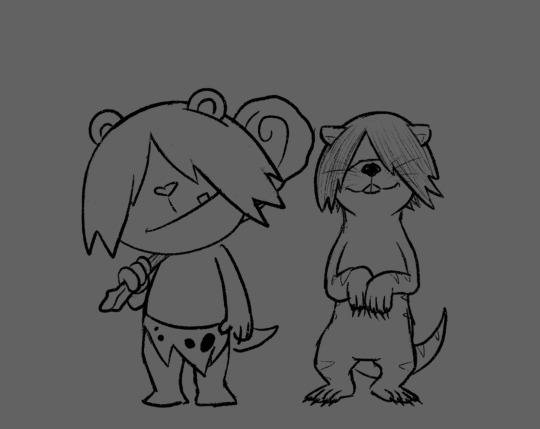
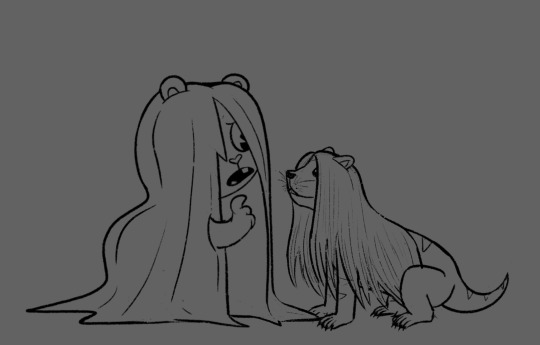
I dunno bout yall, but I just think that’s pretty neat.
#happy tree friends#htf#htf cro marmot#Dino-sore days#htf oc#maybe I’ll do a little science corner for all the prehistoric ocs#I love rambling about cool critters#paleo#loretime
80 notes
·
View notes
Note
Dear Vector Prime, Remember the Ceratopsian Rhinox? What were the beast modes of the other participants of this more saurian Beast Wars?
Dear Saurian Sleuth,
While “Rhinox” adopted the form of a savannah-dwelling ceratopsian, the Optimus Primal of this universe—similar to the Primal of other timelines—chose to become a therizinosaur. The Maximal you know as “Cheetor”, meanwhile, transformed into a lightweight dromaeosaur; as a result, he shared a closer bond with Dinobot—whose raptor form bore a resemblance to the Dinobot of other timelines, save for a coat of feathers—than the Cheetor you know from other universes. “Rattrap”, meanwhile, did not become a dinosaur, but instead transformed into an oversized multituberculate mammal.
Over time, several new Maximals would emerge from their stasis pods and join their forces: these included the antisocial Lockjaw, who spent most of his time patrolling the rivers in his crocodylomorph beast mode, the motherly Hadrotron, a competent field medic whose hadrosaur form let her cross vast distances, and the wise-cracking Updraft, a long-legged azhdarchid who acted as an aerial scout for the Maximals.
#ask vector prime#transformers#maccadam#rhinox#optimus primal#cheetor#dinobot#rattrap#lockjaw#hadrotron#updraft#maximals
21 notes
·
View notes
Text
Multituberculate Earth: Eocene

After the PETM, the world became a hothouse planet. Tropical rainforests stretched from pole to pole and sea levels rose exponentially. In our world, these paradisiacal conditions were actually fairly short lived, due to the Azolla Event, but there this does not happen in this timeline for reasons you’re about to find out. Thus, the Eocene truly is a tropical earth from beginning to end, and in these prolonged warm conditions live thrives.
Reptiles most assuredly benefit from this tropical world. Though squamates aside from snakes are no longer here with us, allocaudates and sphenodontians diversify like crazy, some of the latter even attaining megafaunal sizes. Crocodylomorphs diversity both as terrestrial sebecians, planocraniids and mekosuchines as well as various aquatic forms, including marine dyrosaurids and gharials. Turtles do much the same, the seas having several lineages while tortoises debut on land. Birds, the sole living dinosaurs, diversify in ways similar to our world, with large flightless gastornithiforms, ratites, penguins and plotopterids as well as massive flying pelagornithids and lithornithids, but the specific make-up of their diversity will change drastically as the cooling conditions that killed off some groups and allowed some modern groups to thrive never came about.
Mammals are no different. Therians may be reduced to a few relics soon to die out, but gondwanatheres, dryolestoids, monotremes and of course cimolodont multituberculates thrive.
In the northern continents rising sea levels decrease the formation of land bridges and thus four unique faunas develop:
North America is probably the closest to “Paleocene classic”, with taeniolabidoids as the largest land herbivores, ferugliotheriid gondwanatheres as small to mid-sized herbivores and carnivorous ptilodontoideans, eucosmodontids and microcosmodontids occupying various carnivore/omnivore tiers. But adalatheriids and lambdopsalids have arrived from Asia, meniscoessids are gone, and microcosmodontids now threaten the supremacy of ptilodontoideans, some being the de facto apex predators.
Asia has changed drastically due to the collision with India. Gondwanatheres now run the show as far as herbivorous niches are concerned, with only lambdopsalids remaining otherwise. Ptilodontoideans, eucosmodontids and microcosmodontids all vie within predatory guilds, the former two also forming the bulk of arboreal forms. Relictual kogaionids cling to India and Southeast Asia.
Europe is now an island continent. It retains some Paleocene groups (taeniolabidids, ptilodontoideans, microcosmodontids, eucosmodontids, boffiids) alongside new arrivals from North America (ferugliotheriids) and Africa (galulatheriids). Overall, mammals are rarely the largest land animals, that title going to birds like gastornithids.
Balkanatolia is also an island continent, but dominated by kogaionids in predatory roles and meniscoessids and galulatheriids as herbivores.
Africa sees the arrival of ptilodontoideans and boffiids, occupying primate and rodent like niches respectively. However, galulatheriids and kogaionids still rule the show, composing most of the megafauna. The neighbouring Madagascar shares a similar faunal composition, albeit with sudamericids and adalatheriids instead of galulatheriids.
South America, Antarctica and Australia share a similar faunal block with ferugliotheriid, greniodontid and sudamericid gondwanatheres as herbivores, monotremes as piscivores and molluscivores, ptilodontoideans as arboreal omnivores and carnivores and dryolestoids in a myriad of roles from small insectivores to giant herbivores and apex carnivores. Recently, galulatheriids and African ptilodontoideans have arrived to South America, resulting in some ecological turnovers as the natives adjust to these newcomers.
In this tropical world, mammals aren’t just satisfied with the ground. For the first time multituberculates and dryolestoids take to the skies, mirroring the evolution of bats in our world, albeit instead of one lineage of flying mammals there are several. The first marine mammal is the taeniolabidoid Iqiqquq, an animal which will leave no long term descendents but will have drastic ramifications for this timeline. Other mammals will venture into the seas, but for now it is the marine reptiles that rule.
The Eocene hothouse conditions will keep going until the very end. Carbon was sequestered far more slowly than in our world, but eventually enough was that, in combination with Antarctica’s isolation, it causes a rapid drop in temperatures. Combined with the collision of Europe, Balkanatolia and Asia and subsequent faunal exchange, this will cause another but larger extinction event, the Grand Coupure.

Table of contents:
Azolla Shmolla
The Last Placental
Example Site: Uzunçarşıdere Formation
The Grand Coupure.
#multituberculate earth#multituberculata#multituberculate#spec evo#speculative evolution#speculative biology#speculative zoology#paleoblr#palaeoblr#palaeontology#paleontology
30 notes
·
View notes
Text
More aquatic up:Beginning of the Wrabs for @the6planet8ofbats

The early thallasocene - 101 Million Years After Post Establishment
This not hamsters paradise,for @the6planet8ofbats
Like rattiles (a clade of ectothermic hamsters descended from surface molrocks) by @tribbetherium A group of bats become https:/en.m.wikipedia.org/wiki/Carcination meaning crab-like body plan called Warbs are descended from some bats called Molarchs are into Pikabats like Molemice from by @tribbetherium become various different groups

Warbs is actually just an example of Carcinazation,which is known tobbe mammals,perhaps no arthropods. Like most mammals (Except Monotromes and Allotheres like Gondwanatheres or Multituberculates) reproduced by giving birth. Warbs become losing patagium,one of the few bat lineages of this Planet not have patagium.
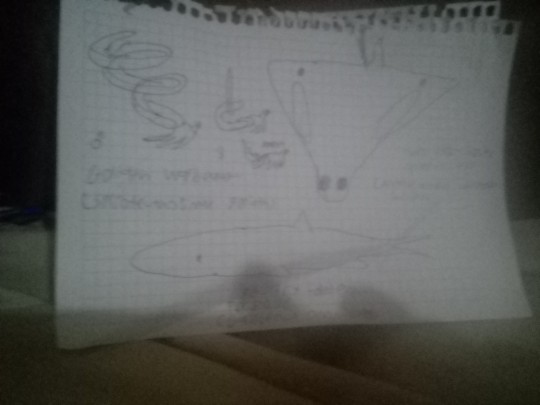
But Warbs have hunters,examples like invertebrate Goliath Warbeater (Spiroteutholimax goliath) like Goliath screwhorn (Spiroteuthocochleus giganteus) by @tribbetherium and Two red-striped magicirill (Magocanaus dirhodostripus) is a krill
A vertebrate is omnivore,but only eating animals are Warbs a cetacean named Poultry porpoise (Galloenus omnivorus) much like earth's chickens or other Poultry like a Guineafowl
Whetever or not??? This decision is entirely up to you!!!! ☺️☺️☺️☺️☺️☺️☺️☺️👏👏👏👏👏👏
7 notes
·
View notes
Text
Identifying Skeletons from Drawings
Okay, Paleonerds, I need help. I've been going through every piece of Paleomedia I can get my hands on, logging them, and trying to ID as many of the prehistoric fauna as I can.
Today, I hit a hard one.

This art is from the 1996 BBC Documentary "Life & Earth", and while the Mesozoic fauna is easy enough (Pteranodon, Tyrannosaurus, Triceratops, Didelphodon, Elasmosaurus), the Paleogene (Or Early Tertiary one as was known at the time) is a lot harder.
I mean, there's more to ID and a lot of it is small.
Still, I was able to identify Gastornis, Barylambda, and Palaeochiropteryx.
There are probably a few ungulates, carnivorans, creodonts, primates, and multituberculates that are just a wash.
If anyone knows what the things are, or better yet, the art piece this is from, let me know!
#Paleontology#Paleomedia#Life & Earth#BBC#Documentary#Dinosaurs#Mammals#Prehistoric#Extinction#Tyrannosaurus#Pteranodon#Triceratops#Elasmosaurus#Didelphodon#Paleogene#Gastornis#Barylambda#Palaeochiropteryx
13 notes
·
View notes